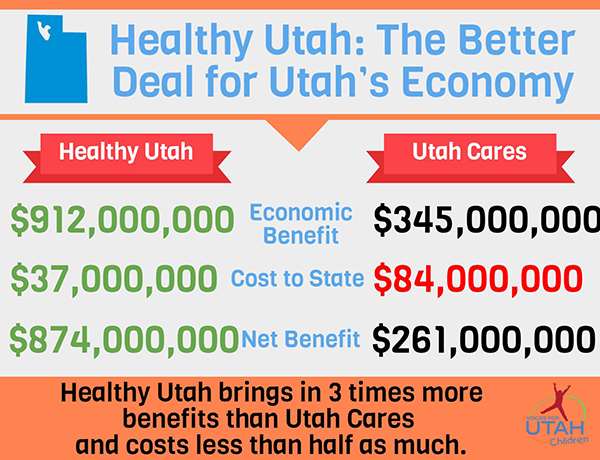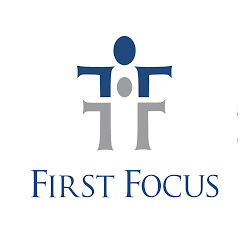A new report by Notalys, LLC, compares two options for expanding health care coverage to close the insurance gap for an estimated 66,000 Utahns who do not earn enough to receive federal subsidies for insurance but don’t qualify for traditional Medicaid. The Healthy Utah plan significantly expands private insurance for low‐income individuals using federal funds during its pilot period. Until end of 2016, full risk of program falls on the federal government. State portion of costs is 0% initially, rising gradually to 10%. The Utah Cares plan partially expands Medicaid and offers primary care, but not specialty care or hospitalization, to those in poverty using a mix of federal and state funds. Enrollments will be cut in the case of cost‐overruns, and state pays 30% of all costs.
Healthy Utah has six times more value per dollar than Utah Cares—it also costs much less and has lower risk.
Return on Investment:
- Healthy Utah: 24.4
- Utah Cares: 4.1

Take‐Aways:
Only Healthy Utah effectively closes the coverage gap. Thousands under Utah Cares will have access only to primary care, which covers only a small part of health care needs.
- Downside risks under Healthy Utah are borne by the federal government. Under Utah Cares, these risks are shared by the state and may result in significant cutbacks.
- “Woodwork” effects are the most significant long‐term risk faced by both programs, though they are not an unmanageable risk. Because of wider program appeal, woodwork effects are larger under Healthy Utah than Utah Cares.
- Healthy Utah functions predominantly through private insurance, which strengthens lowincome families, reduces financial burdens on health care providers and hospitals, and improves the state’s economy.
Research sponsored by Voices for Utah’s Children, AARP Utah and the Utah Health Policy Project
For more information, see the complete report:






